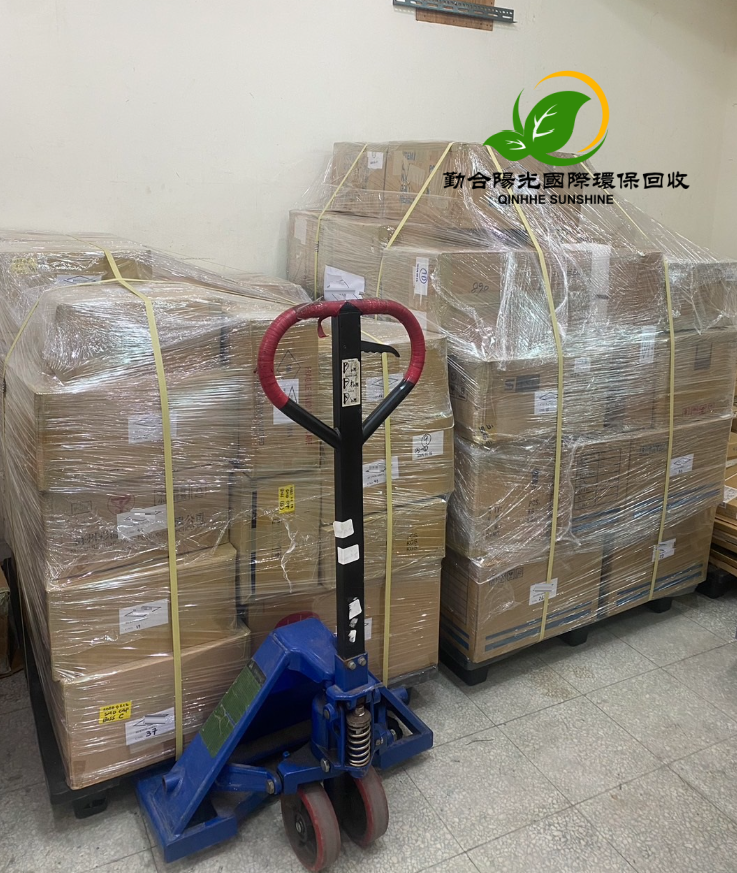E-commerce Return-to-Port Recycling: A New Proposition for Cross-Border E-commerce
In the landscape of cross-border e-commerce, "e-commerce return-to-port recycling" is gradually becoming a critical link. As cross-border e-commerce business volumes rise, the need for goods to be returned to ports and processed for recycling is becoming increasingly prominent. This field harbors both challenges and opportunities, and is crucial for optimizing the cross-border e-commerce industry chain.
**Current Status of E-commerce Return-to-Port Recycling**
1. **Scale and Growth Trends**: In recent years, the cross-border e-commerce market has flourished, but at the same time, return rates have remained high. Industry reports indicate that return rates for some categories of cross-border e-commerce can reach 10% - 30%. These returned goods accumulate in large quantities at ports, leading to continuous growth in the scale of e-commerce return-to-port recycling. For example, in China, major cross-border e-commerce export ports such as Shenzhen, Ningbo, and Shanghai are seeing double-digit annual increases in the volume and value of returned goods processed.
2. **Main Recycling Models**: Currently, there are several models for e-commerce return-to-port recycling. One is for brands or e-commerce platforms to establish their own recycling and processing centers near ports, where returned goods are inspected, sorted, and processed. For instance, some large 3C electronic product brands set up professional inspection and repair teams near ports to evaluate returned products. Repairable products are repackaged and re-entered into secondary sales channels, while irreparable ones are disassembled for parts reuse. Another model involves outsourcing to third-party professional recycling companies, which have extensive processing experience and broad sales channels, enabling efficient handling of various types of returned goods. Additionally, some collaborate with local distributors or retailers to resell partially salable returned goods at discounted prices through their offline channels.
3. **Challenges Faced**: The first challenge is logistics. The logistics of returned goods often lack economies of scale, making reverse logistics costly. Collecting goods from overseas consumers and transporting them back to ports involves complex international shipping and customs clearance processes, incurring high time and cost expenses. Secondly, product identification and classification are difficult due to the wide range of sources and varying conditions of returned goods, requiring professional knowledge and significant manpower to accurately assess their value and reusability. Furthermore, regulatory differences across countries and regions add to the complexity, as varying inspection, quarantine, and environmental requirements complicate the handling process.
**Significance of E-commerce Return-to-Port Recycling**
1. **For E-commerce Enterprises**: Effective cost reduction is achieved by recycling reusable goods or components, reducing the need for new product production and saving on procurement and production costs. Additionally, enhancing customer satisfaction through a robust return-to-port recycling mechanism reassures consumers about returns, boosting brand loyalty. For example, a well-known apparel cross-border e-commerce company saw a 15% increase in customer repurchase rates after establishing an efficient return-to-port recycling system.
2. **For Resource Utilization**: Promoting resource recycling, many returned goods have only minor defects or were returned due to packaging issues. After repair or refurbishment, they can be reintroduced to the market, reducing resource waste. For instance, returned toys and household items can be reprocessed and resold, realizing secondary value for resources.
3. **For Market Environment**: Standardizing market order by preventing large quantities of returned goods from entering the market chaotically and disrupting price systems. Simultaneously, promoting green industry development and fostering a sustainable cross-border e-commerce ecosystem.
**Strategies to Promote E-commerce Return-to-Port Recycling Development**
1. **Optimizing Logistics Systems**: E-commerce enterprises, logistics companies, and ports should collaborate to establish reverse logistics alliances, integrating logistics resources for returned goods to improve transportation efficiency and reduce costs. Utilizing big data to optimize logistics route planning ensures fast and accurate goods transportation. For example, predicting concentrated return areas and arranging transportation resources in advance can improve loading rates.
2. **Enhancing Technological Investment**: Introducing intelligent inspection equipment and software systems to improve the efficiency of product identification and classification. Using AI image recognition technology to quickly assess product appearance damage and employing big data to analyze sales and return data to predict processing needs for returned goods.
3. **Policy Communication and Coordination**: Government departments should strengthen policy communication with other countries and regions to promote unified or coordinated regulatory standards for returned goods. Industry associations should organize enterprises to participate in international rule-making, creating a favorable policy environment for e-commerce return-to-port recycling.
**Future Prospects of E-commerce Return-to-Port Recycling**
With the continuous development of cross-border e-commerce, e-commerce return-to-port recycling will embrace broader development prospects. In the future, it will advance towards intelligence, green practices, and internationalization. Intelligence will be reflected in the automation and smart processing of the entire process from product inspection and classification to handling, improving efficiency and accuracy. Green practices will emphasize environmental protection, using eco-friendly packaging materials and optimizing processing techniques to reduce environmental impact. Internationalization will manifest as cross-border e-commerce enterprises establishing closer cooperation with recycling companies worldwide, forming global unified standards and processes for return-to-port recycling, and promoting the sustainable development of the cross-border e-commerce industry.
我的WhatsApp:69536972-郵箱:martin.hyq88@gmail.com


 繁體中文
繁體中文 简体中文
简体中文 English
English




 咨询热线
咨询热线 公司邮箱
公司邮箱 地址导航
地址导航

